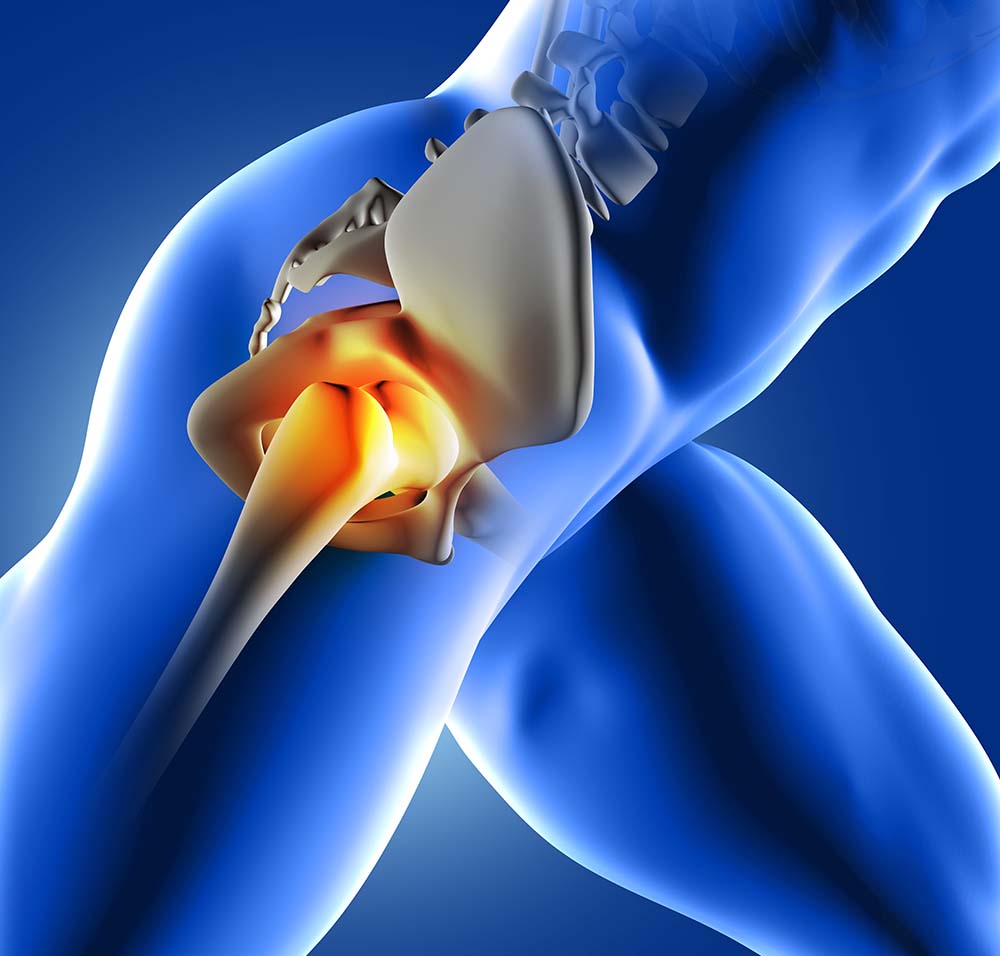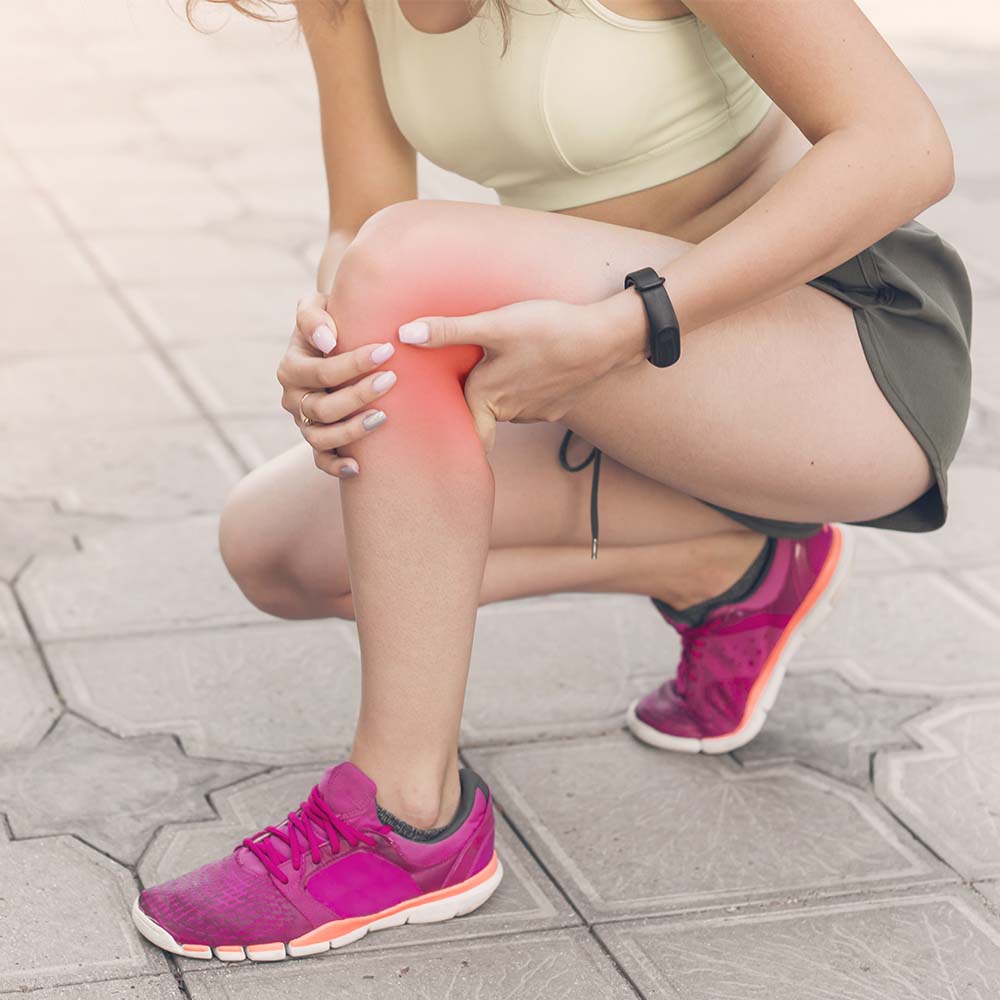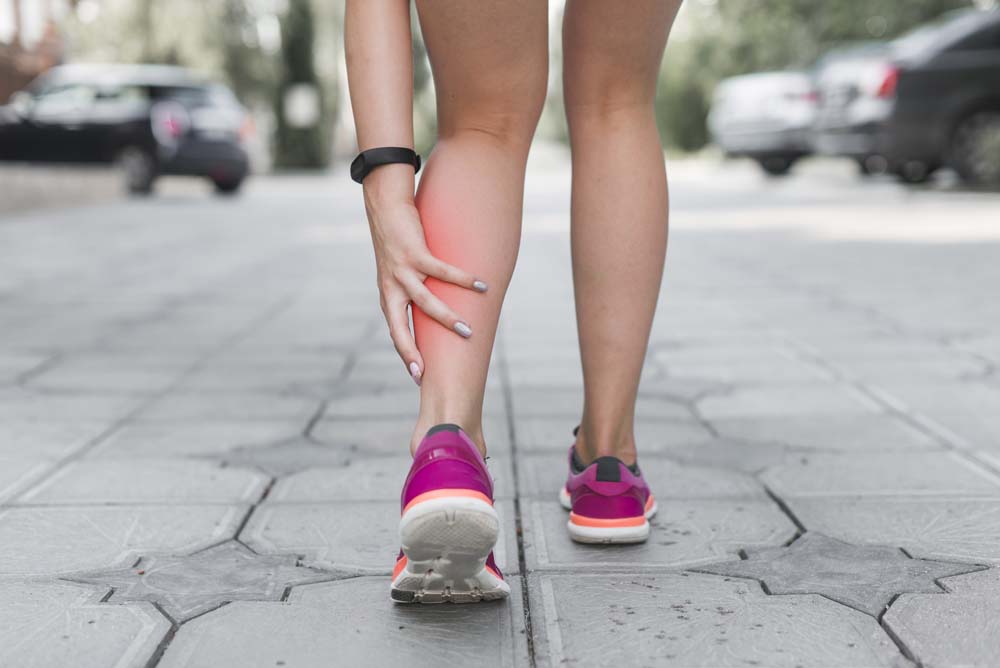

The lower extremity joints are the hips, knees, ankles, and feet.
The hip joint is a ball and socket joint consisting of the head of the femur (the thigh bone) and the acetabulum (a deeply indented portion of the pelvis made specifically for the femur head). The hip joint is very mobile but not as mobile as the shoulder. The femur head is surrounded by a tough cartilage called the labrum that holds it into the pelvis. Many muscles attach to the hip including the quadriceps. Many muscles that attach to or cross the hip not only move the hip but also the knee.
Common ailments affecting the hip include:
- Bursitis
- Arthritis
- Muscle contracture
- Labrum tear


The knee is one of the most complex joints in the body. It is comprised of the far end of the femur, the top of the tibia (the larger bone in the lower leg), the patella (knee cap) , and the fibula (the small long bone on the outside of the lower leg). There are four ligaments of the knee: the anterior cruciate ligament (ACL), posterior cruciate ligament (PCL), medial collateral ligament (MCL), and the lateral collageral ligament (LCL). The medial meniscus and the lateral meniscus are also vital to the health of the knee. Each meniscus is a C-shaped pad of cartilage that is attached to the top of the tibia and allows for smoothe movement of the femur over the tibia.
Common ailments affecting the knee include:
- Ligament tears
- Meniscus tears
- Patella dislocation
- Chondromalacia patella (Arthritis of the patella)


The ankle is the joint between the lower leg and the foot. It is made up of the tibia, fibula, and talus. The talus is the large bone that connects the foot to the lower leg. While the ankle is often seen as a single joint it is actually made up of 3 separate joints 1) the talocrural joint- where the talus meets the tibia 2) the subtalar joint- where the talus meets the calcaneous (heel bone) and 3) the inferior tibiofibular joint- where the bottom of the fibula and the tibia meet near the outside of the talus.
The ankle joint is covered in a vast network of ligaments that provide stability to the ankle. These ligaments can be injured when the ankle is rolled.
Common ailments affecting the ankle include:
- Sprains
- Fractures
The foot is a complex structure. It consists of 26 bones and 33 joints that must work together with 19 muscles and over a hundred ligaments. The bones that make up the foot are: navicular, talus, calcaneus (heel bone), lateral/intermediate/medial cuneiforms, cuboid, 1st-5th metatarsals (long bones), and the phalanges (toes). The foot does more than act as a platform for standing; it also provides feedback to our brain regarding the surface you are standing on to help provide balance.
Common ailments of the foot include:
- Plantar fasciitis
- Diabetic neuropathy
- Bunions
- Pes planus (flat foot)
Chiropractic adjustments help maintain proper alignment in the lower extremity joints to ensure good joint health and reduce risk of future injury.
If you have questions about how our team at One Goal Wellness can help you, please schedule a consultation today.


